William H. McNeill passed away. William H. McNeill
His book “Plagues and Peoples” (1976) was definitely an influence on my thinking. Nothing like having some major external factor overriding all the work of the “great men” who lead nations.

Excellence in Historical Research and Analysis

Excellence in Historical Research and Analysis
William H. McNeill passed away. William H. McNeill
His book “Plagues and Peoples” (1976) was definitely an influence on my thinking. Nothing like having some major external factor overriding all the work of the “great men” who lead nations.
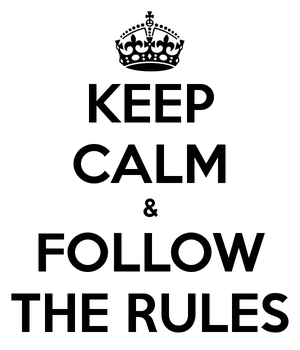 Dr. Reina Pennington, a professor of history at Norwich University, recently published an analysis of the Eastern Front during World War II which made the case that the Soviet superiority in manpower over Germany was not as large as is often claimed. In support of her argument, Pennington provided a table comparing the total number of Soviet and German combat forces and force ratios at different times during the conflict. She pointed out that for much of the war, Soviet forces were either outnumbered, or achieved modest numerical superiorities that did not exceed 3 to 1 until late in 1944. “A 2:1 advantage is significant,” Pennington argued, “but falls short of the 3:1 force ratio that is generally regarded as necessary for attacking forces, and it’s a long way from the double-digit advantage that is often claimed.”
Dr. Reina Pennington, a professor of history at Norwich University, recently published an analysis of the Eastern Front during World War II which made the case that the Soviet superiority in manpower over Germany was not as large as is often claimed. In support of her argument, Pennington provided a table comparing the total number of Soviet and German combat forces and force ratios at different times during the conflict. She pointed out that for much of the war, Soviet forces were either outnumbered, or achieved modest numerical superiorities that did not exceed 3 to 1 until late in 1944. “A 2:1 advantage is significant,” Pennington argued, “but falls short of the 3:1 force ratio that is generally regarded as necessary for attacking forces, and it’s a long way from the double-digit advantage that is often claimed.”
To support her assertion of the relevance of the 3-1 force ratio, Pennington linked to an article by Trevor N. Dupuy, “Combat Data and the 3:1 Rule,” published in the summer 1989 edition of International Security. The problem with citing Dupuy is that his assessment of the 3-1 rule contradicts her assertion of it.
Dupuy criticized the 3-1 rule on empirical grounds. The so-called “3-1 rule” is a military aphorism that holds that attacking forces require a 3 to 1 advantage over defending forces in order to succeed. Although this rule has become widely-known and widely-held, especially in Western militaries, its origin is unknown and unattributed. It is not exactly clear to what exactly it refers, and there is no known original statement of the rule that can be consulted for clarification.
Dupuy questioned the ambiguity of the rule, which in turn undermined its relevance.
[W]hat is the force ratio to be used with the 3:1 force ratio planning factor? Is it numbers of men, or weapons? Is it firepower? Is it some other calculation of a combat power ratio? In any event, it is clear that neither numbers nor firepower tells us much unless we know the circumstances under which these numbers face each other and the manner in which the firepower is applied.[1]
In 1984, Dupuy’s Historical Evaluation Research Organization (HERO) compiled a database of battles from 1600 to 1973 for the U.S. Army Concepts Analysis Agency (CAA; now known as the U.S. Army Center for Army Analysis). CAA’s examination of the numerical force ratios in the database showed that attackers with advantages of 3-1 or more in manpower succeeded 74% of the time. It also showed that attackers won between 58% and 63% of the time when attacking with between a 1.5-1 numerical disadvantage and less than a 3-1 advantage. Attackers also managed to obtain a manpower advantage of 3-1 or greater in just 106 of 598 cases (17.7%) examined.[2]
Dupuy concurred that a 3-1 ratio based on a simple numerical total of troop numbers had limited use as a general rule-of-thumb guide for military planning, but asserted that it was useless for analytical purposes Simply put, while there are many historical cases where an attacking force with a 3-1 numerical advantage succeeded, there are also many cases where attackers won with less than a 3-1 advantage, and even with a numerical inferiority. On the Eastern Front during World War II, for example, the German Army regularly conducted successful attacks against numerically superior Soviet forces.
Dupuy was so certain of the validity of the data on this that he made it an aphorism of his own: In the average modem battle, the attacker’s numerical strength is about double the defender’s.
This is because the attacker has the initiative and can initiate combat at a time and place of his choosing and in the manner of his choosing. The attacker can mass his forces at critical points on the battlefield to gain the advantage in strength which he believes necessary to assure the success of the attack.
A battle usually does not take place unless each side believes it has some chance for success. Otherwise, the attacker would avoid taking the initiative. The defender, if he could not avoid battle by withdrawal, would make every possible effort to reinforce the prospective battle area sufficiently to have a chance for successful defense. One circumstance in which a battle occurs without the tacit agreement or acceptance of the defender, is when the attacker achieves surprise. Alternatively, surprise by a defender (for instance, by ambush) may result in a battle taking place before the prospective attacker is ready.
Most military men are aware of the rule of thumb that an attacker can count on success if he has a three-to-one numerical superiority, while a defender can expect success if his inferiority is not less than one-to-two. But the side achieving surprise can count on the effects of surprise multiplying its force strength by a factor ranging between 1.5 and 2.5 (or even more in some cases). Thus, an attacker expecting to achieve surprise would be willing to attack with less than a three-to-one superiority.
Another factor which can influence an attacker to seek battle with less than a three-to-one superiority is confidence in the superior quality of his troops. This accounts for many instances in which the Germans attacked in World War II with less than the desirable numerical superiority, and for the similar instances of Israeli attacks in the Arab-Israeli wars without great numerical superiority.[3]
Dr. Pennington is on fairly firm ground in rejecting the idea that numerical superiority was the sole reason the Red Army defeated the German Army in World War II, but numbers did play an extremely important role in the Soviet success. The lack of a 3-1 manpower advantage did not preclude the Soviets from battlefield success; 2-1 was sufficient. By the time the Soviets achieved a 3-1 advantage, success was well in hand and the end in sight.
NOTES
[1] Trevor N. Dupuy. Numbers, Predictions and War: Using History to Evaluate Combat Factors and Predict the Outcome of Battles. Indianapolis; New York: The Bobbs-Merrill Co., 1979, p. 13
[2] Joshua M. Epstein, “Dynamic Analysis and the Conventional Balance in Europe,” International Security, Spring 1988, p. 156; Robert Helmbold and Aqeel A. Khan. “Combat History Analysis Study Effort (CHASE): Progress Report for the Period August 1984-June 1985,” Bethesda, MD: U.S. Army Concepts Analysis Agency, August 1986
[3] Trevor N. Dupuy. Attrition: Forecasting Battle Casualties and Equipment Losses in Modern War. Falls Church (VA): Nova Publications, 1995, pp. 98-99
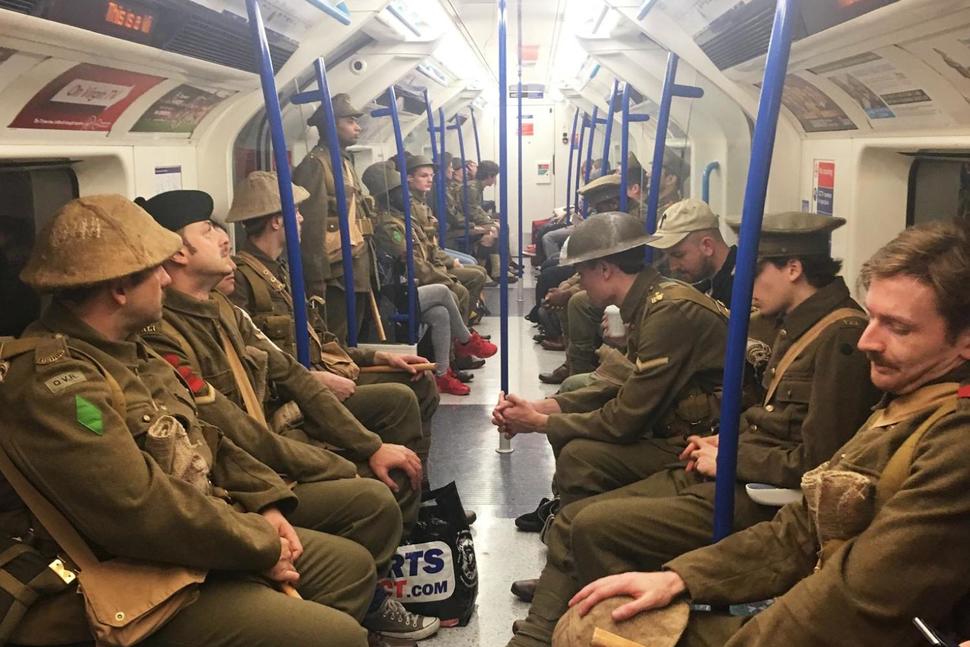
Last week marked the 100th anniversary of the first day of the Battle of the Somme during the First World War. The battle, intended to relieve pressure on the French Army defending against a massive German offensive aimed at Verdun, is remembered for its enormous casualty list and strategic futility. Contemporary historians are re-thinking the impact of the Somme battle and of the British Army as a learning organization. Dr. Aimée Fox-Godden of the University of Birmingham has published an interesting examination of how the lessons of the Somme were viewed and applied in other theaters during the war. Her post is the second in a series by the First World War Research Group of the Defense Studies Department, King’s College London.
Another entry in the lessons of World War I department comes in the pages of the current edition of Military Review. Major Robert Chamberlain (USA) examines the role theories of warfare influence the planning, conduct and outcome of battles, looking specifically at the case of the German Army during the Battle of Verdun (pp. 78-87). He then looks at the lessons of Verdun regarding the relationship between a theory of warfare, political objectives, and outcomes and applies them to the current state of U.S. military thinking.
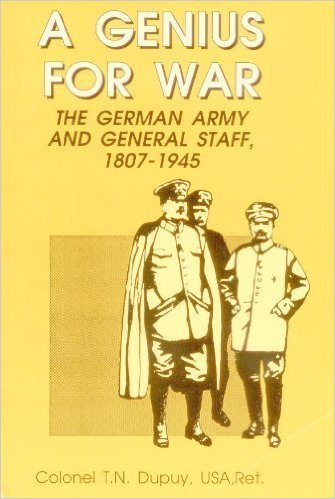
In 1987 DMSI (Trevor Dupuy’s old company) was giving a week-long course on the fundamentals of the U.S. military at a government agency. The final day was a board discussion that included Trevor Dupuy. The subject came up about whether the U.S. Army could use a general staff system similar to what the Germans had (and which Trevor wrote about in his book Genius for War: The German Army and General Staff, 1807-1945)
During the discussion Trevor stated that the United States Armed Forces actually has nine general staffs. He proceeded to list them: 1) the army staff, 2) the staff of the secretary of the army, the same for the air force (+2), the same for the navy (+2), and of course, 7) the Joint Staff and 8) the Office of Secretary of Defense. That makes eight. “What is the ninth staff?” a student asked. “The GAO” Trevor responded.
![British Mark III Tank in ditch, 1917 [Wikimedia Commons]](https://dupuyinstitute.dreamhosters.com/wp-content/uploads/2016/06/British-Mark-III-Tank-in-ditch-1917.jpg)
Defence-in-Depth, the blog of the Defence Studies Department at King’s College London, is highlighting presentations from the Second World War Research Group’s recent “1940-1942: Fulcrum of the Twentieth Century Conference.”
An interesting contribution by Philip McCarty examined the creation of a committee by the War Office, chaired by retired general Sir George Bartholomew, to assess the lessons of British defeat in France in 1940. This quick and dirty effort resulted in a series of recommendations that varied in military validity, as well as acceptability within the British Army establishment. This is an interesting case study of the actual mechanics of evolution in warfare and how military establishments evaluate military experience. Implications of tactical success or failure are not necessarily readily apparent, nor is it always possible to act immediately on them when identified. Sometimes the right conclusions can still produce wrong solutions.
Trevor N. Dupuy argued that “the application of sound, imaginative thinking to the problems of warfare (on either an individual or an institutional basis) has been more significant than any new weapon.” The preconditions for successfully assimilating changes required:
Successful change and innovation is both difficult and rare. It is seldom a smooth process.
NOTES
[1] Trevor N. Dupuy, The Evolution of Weapons and Warfare (Indianapolis, IN: The Bobbs-Merrill Company, Inc., 1980), pp. 338
I find the conclusion toward the end the article interesting:
“My analysis found that on the largest scale – casualty rates from battles grouped by underlying geology – all of these limestone-related factors appear to balance. That is, it didn’t really matter if a soldier was attacking across limestone, igneous and sedimentary rock, or terrain underlain by sand and clay, the casualty rates were consistently between 12 and 15 percent.”
Article from History News Network is here:
http://historynewsnetwork.org/article/162968
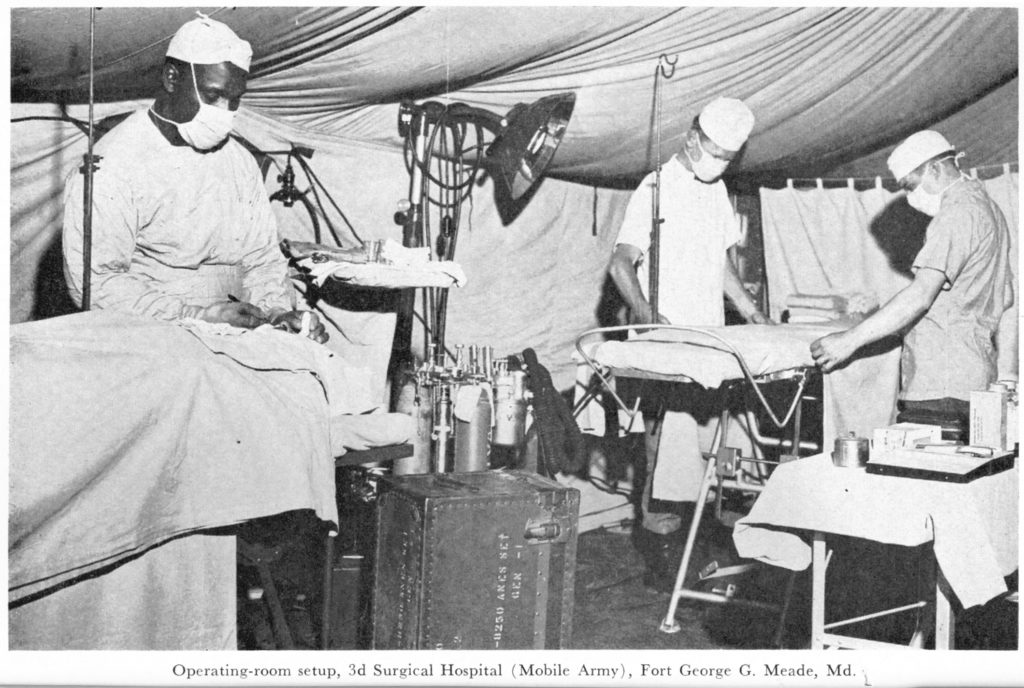
Trevor N. Dupuy developed some hypotheses about casualty rates in combat in the process of quantifying the effects of surprise and relative combat effectiveness.[1] After testing these hypotheses against historical combat data, Col. Dupuy believed them valid enough to be considered verities. His confidence in them ranged from absolute for most to reasonable certainty for a few. The first two points are statements of combat experience, but they are directly relevant to the nature of battle attrition. As with his verities of combat, these will be discussed in more detail in subsequent posts.
Personnel Attrition Verities
Material Attrition Verities
NOTES
[1] Trevor N. Dupuy, Attrition: Forecasting Battle Casualties and Equipment Losses in Modern War (Falls Church, VA: NOVA Publications, 1995), pp. 98-103. A slightly different version of this list was originally published in Trevor N. Dupuy, Understanding War: History and Theory of Combat (New York: Paragon House, 1987), pp. 174–180.
Interesting piece by General David H. Petreaeus on General Ulysses S. Grant
http://www.nytimes.com/interactive/projects/cp/obituaries/archives/david-petraeus
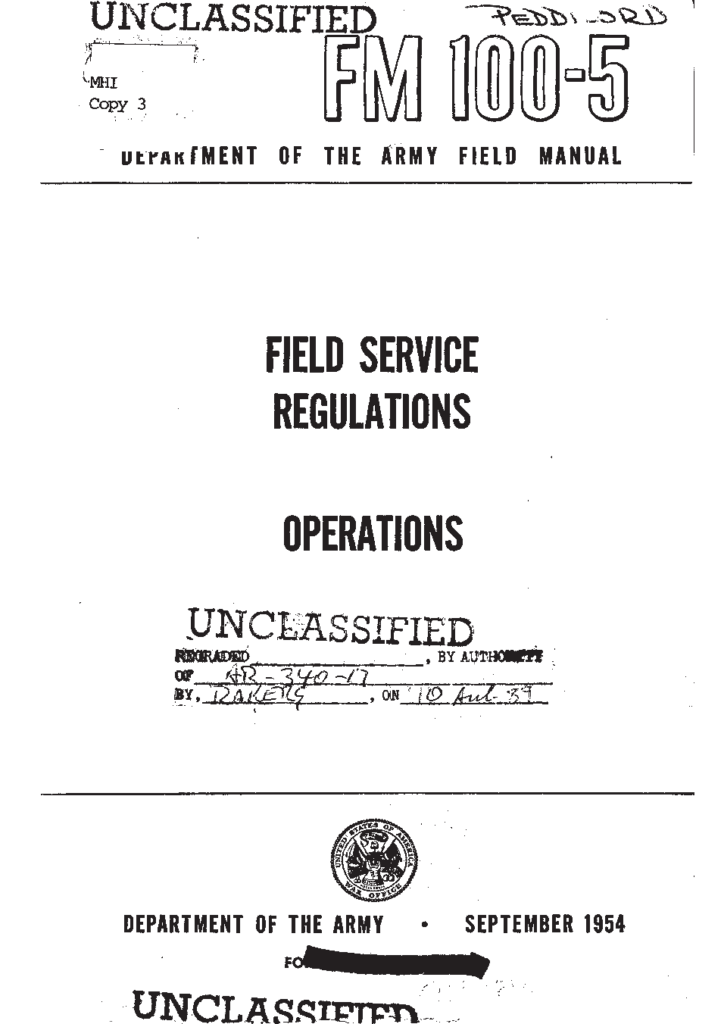 When historian and pundit James Jay Carafano called for the U.S. defense community to refocus on the classic principles of war, he did not specify whose list should be adopted. A quick check reveals several such lists, some with vastly different concepts reflecting different national and temporal experiences.
When historian and pundit James Jay Carafano called for the U.S. defense community to refocus on the classic principles of war, he did not specify whose list should be adopted. A quick check reveals several such lists, some with vastly different concepts reflecting different national and temporal experiences.
I suspect debates over the lists and each principle could very well spark a new academic sub-discipline. (Let the wild rumpus start!) Interestingly enough, Trevor N. Dupuy considered the 1954 edition of the U.S. Army’s Field Manual FM 100-5, Field Service Regulations, Operations to have the best official summary of the principles of war. That list is offered for consideration below:
Section I. PRINCIPLES OF WAR
- General
The principles of war are fundamental truths governing the prosecution of war. Their proper application is essential to the exercise of command and to successful conduct of military operations. The degree of application of any specific principle will vary with the situation and the application thereto of sound judgment and tactical sense.
- Objective
Every military operation must be directed toward a decisive, obtainable objective. The destruction of the enemy’s armed forces and his will to fight is the ultimate military objective of war. The objective of each operation must contribute to this ultimate objective. Each intermediate objective must be such that its attainment will most directly, quickly, and economically contribute to the purpose of the operation. It must permit the application of the maximum means available. Its selection must be based upon consideration of means available, the enemy, and the area of operations. Secondary objectives of any operation must contribute to the attainment of the principal objective.
- Offensive
Only offensive action achieves decisive results. Offensive action permits the commander to exploit the initiative and impose his will on the enemy. The defensive may be forced on the commander, but it should be deliberately adopted only as a temporary expedient while awaiting an opportunity for offensive action or for the purpose of economizing forces on a front where a decision is not sought. Even on the defensive the commander seeks every opportunity to seize the initiative and achieve decisive results by offensive action.
- Simplicity
Simplicity must be the keynote of military operations. Uncomplicated plans clearly expressed in orders promote common understanding and intelligent execution. Even the most simple plan is usually difficult to execute in combat. Simplicity must be applied to organization, methods, and means in order to produce orderliness on the battlefield.
- Unity of Command
The decisive application of full combat power requires unity of command. Unity of command obtains unity of effort by the coordinated action of all forces toward a common goal. Coordination may be achieved by direction or by cooperation. It is best achieved by vesting a single commander with requisite authority. Unity of effort is furthered by willing and intelligent cooperation among all elements of the forces involved. Pearl Harbor is an example of failure in organization for command. See appendix II.
- Mass
Maximum available combat power must be applied at the point of decision.Mass is the concentration of means at the critical time and place to the maximum degree permitted by the situation. Proper application of the principle of mass, in conjunction with the other principles of war, may permit numerically inferior forces to achieve decisive combat superiority. Mass is essentially a combination of manpower and firepower and is not dependent upon numbers alone; the effectiveness of mass may be increased by superior weapons, tactics, and morale.
- Economy of Force
Minimum essential means must be employed at points other than that of decision.To devote means to unnecessary secondary efforts or to employ excessive means on required secondary efforts is to violate the principle of both mass and the objective. Limited attacks, the defensive, deception, or even retrograde action are used in noncritical areas to achieve mass in the critical area.
- Maneuver
Maneuver must be used to alter the relative combat power of military forces.Maneuver is the positioning of forces to place the enemy at a relative disadvantage. Proper positioning of forces in relation to the enemy frequently can achieve results which otherwise could be achieved only at heavy cost in men and material. In many situations maneuver is made possible only by the effective employment of firepower.
- Surprise
Surprise may decisively shift the balance of combat power in favor of the commander who achieves it.It consists of striking the enemy when, where, or in a manner for which he is unprepared. It is not essential that the enemy be taken unaware but only that he becomes aware too late to react effectively. Surprise can be achieved by speed, secrecy, deception, by variation in means and methods, and by using seemingly impossible terrain: Mass is essential to the optimum exploitation of the principle of surprise.
- Security
Security is essential to the application of the other principles of war.It consists of those measures necessary to prevent surprise, avoid annoyance, preserve freedom of action, and deny to the enemy information of our forces. Security denies to the enemy and retains for the commander the ability to employ his forces most effectively.
[Field Manual (FM) 100-5, Field Service Regulations, Operations (Washington, D.C., Department of the Army, 1954), pp. 25-27]
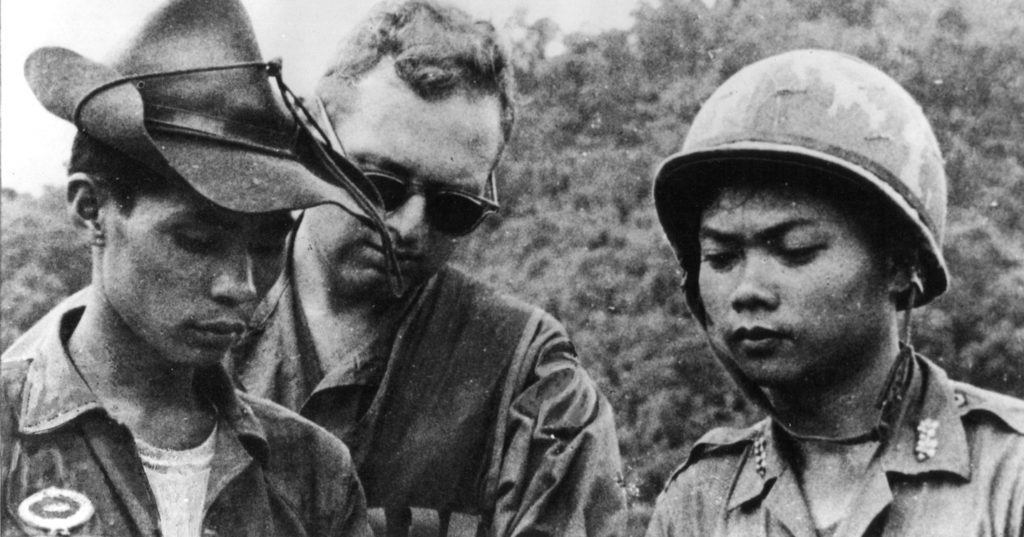
Is it possible for an outside country to build an effective indigenous military? The United States inter-agency and national security communities have a strong current interest in helping other countries develop and sustain effective security establishments. This is officially termed Security Cooperation (SC). The assistance provided directly by the U.S. military to foreign military organizations is called Security Force Assistance (SFA). SC and SFA are both integral aspects of current U.S. foreign policy and military strategy.
The U.S. has been providing SFA since at least World War II, but its success in this undertaking has been decidedly mixed. A two-decade effort by the U.S. to build an effective South Vietnamese army culminated in abject failure at the hands of North Vietnam in 1975. Despite a decade of investment in money, resources, and manpower, the U.S. has yet to build (or rebuild) independently effective military establishments in Afghanistan and Iraq.
One consistent factor in each of these cases has been the lack of a stable, effective indigenous government to underpin the military forces. How important is effective governance to successful military establishments? History suggests that it may be integral.
On his wonderful blog, The Best Defense, Tom Ricks recently posed the question “Is the existence of a capable infantry a sign of a strong government bureaucracy?” In his recently published The Gunpowder Age: China, Military Innovation, and the Rise of the West in World History, Tonio Andrade cited Stephen Morillo’s observation that “strong infantry depends on strong government” to support that assertion that Europe had poor infantry in the 15th century by Chinese standards because of underdeveloped governments.
According to Ricks, Morillo made six implicit points:
Historical experience would suggest not only that capable military forces are reflective of effective governance, but that strong governments are necessary in order to field strong military establishments. This fundamental lesson may be vital to the future success of U.S. SC and SFA efforts.